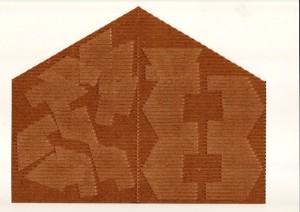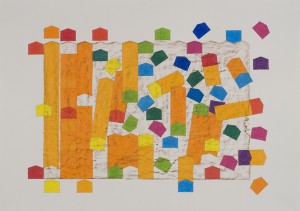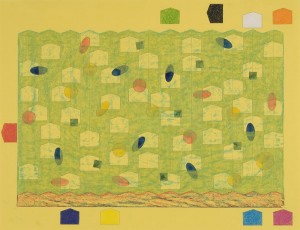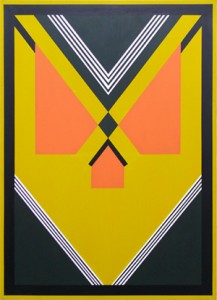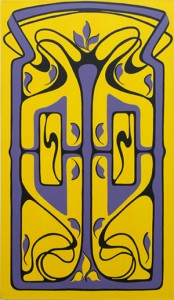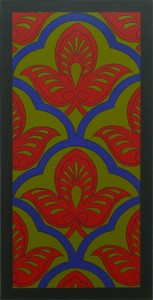House and home
‘This is a country of many colourful, patterned, plastic veneers, of brick-veneer villas, and the White Australia Policy.’ Robin Boyd, The Australian ugliness.
The recent re-release by Text Publishing of The Australian ugliness by Robin Boyd, first published in 1960, provides an occasion to reflect on the prevailing views around cultural diversity. Written from the point of view of an architect and town planner, it is a hilarious read and a great work of social satire, according to which the aspirational drive for individualism and excess has been the downfall of any attempts at coming to some useful agreement on matters of progressive design in the post-colonial era. He has a point, of course, but it was and is a losing battle. I was thinking of this when viewing two recent exhibitions that dwell on the cultural life of the European expatriate.
In flotsamandjetsam, at Place Gallery in Richmond, Alex Selenitsch draws on his experience of being part of the first wave of European migration after the Second World War. Here, the memory of the singularly basic accommodation provided by the Bonegilla Migrant Reception Centre in north-eastern Victoria is reduced to the simple form of the box with a triangular roof (a dormitory hut from the side view). The kaleidoscopic refraction of textures, patterns and shapes, re-arranged like Cuisenaire rods, presents what for Selenitsch was evidently a childhood memory repeated ad infinitum.
Institutionalisation can do this, of course. As I know from my mother’s experience, life at Bonegilla, as the last stop in many years of migrant camp life, was no Bauhaus experiment. Living in a bare hut under a corrugated iron roof, hot in summer, freezing in winter, with men and women segregated etc. meant that the very suburbia that Boyd mocked must have looked like heaven with curtains. In such circumstances, away from such relentless utilitarian conformity, it is no wonder that the ‘new Australian’ would conform to type by filling the house with antiques and European folk art (as my mother did).
Responding in kind, the paintings of Elizabeth Pulie at Neon Parc lay claim to a northern Italian heritage and a predilection for old pattern books and what otherwise might be described as ‘Mixed Historical’. Here, Pulie brings together the exquisite flourishes of art nouveau, geometric art deco and those devolved stencilled botanicals in acculturated pastel colours and hieratic borders to signify this oddly eclectic heritage in her precisely numbered series of paintings, of which the small selection presents a representative few. Each one, in its own way, is reconfigured as a model of symmetry and harmony, lending hope to the possibility that even Boyd may have approved of the alternating template.
Alex Selenitsch, flotsamandjetsam, Place Gallery, Melbourne, 9 May – 2 June 2012.
Elizabeth Pulie, Mixed historical, Neon Parc, Melbourne, 6–30 June 2012.
